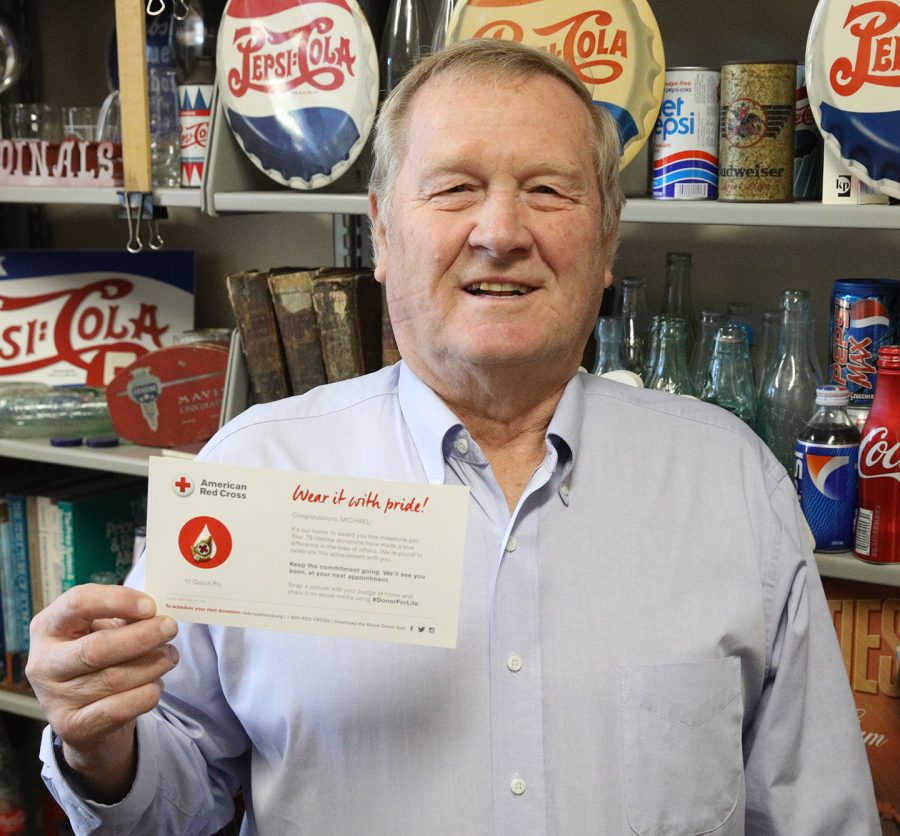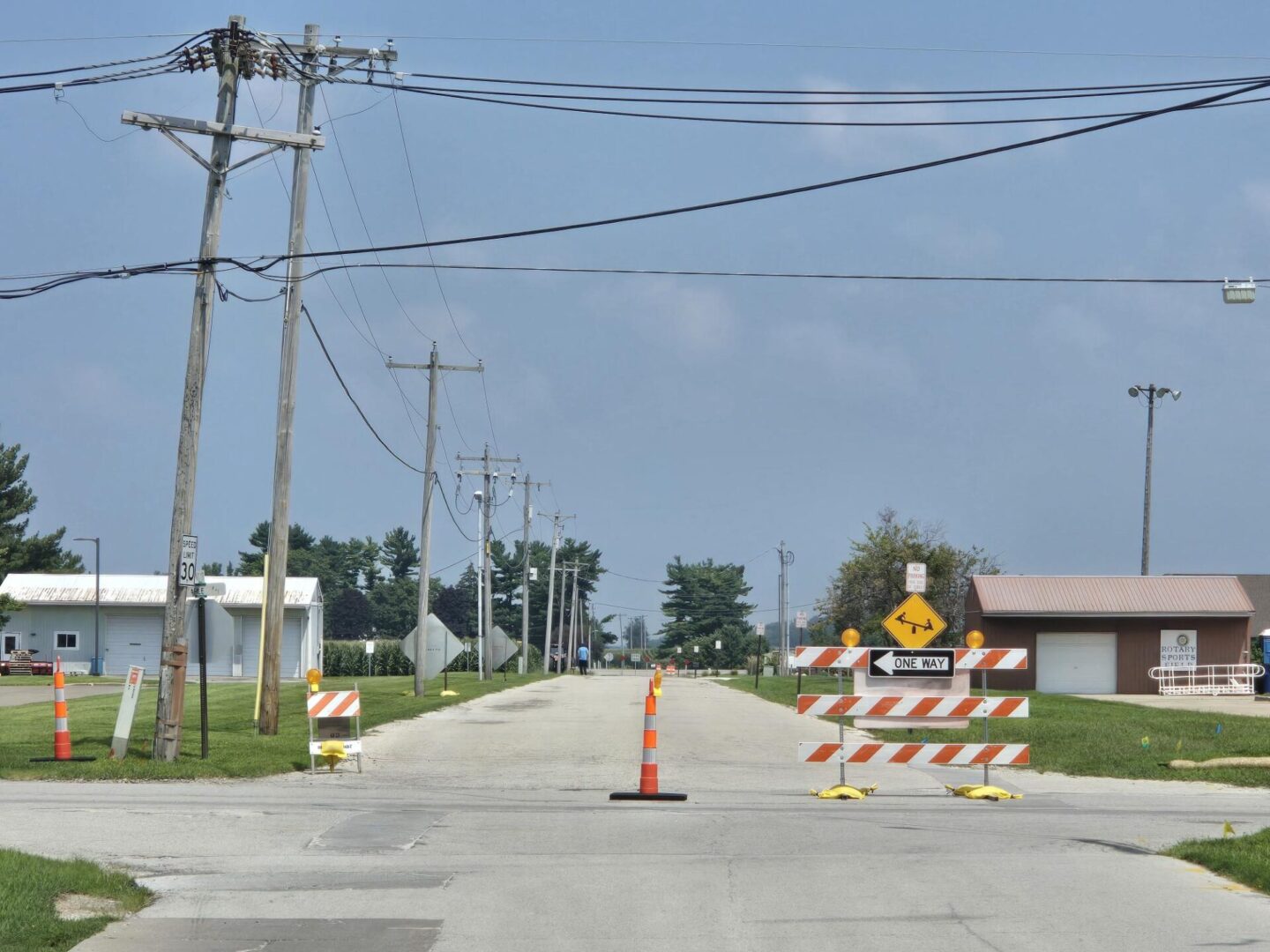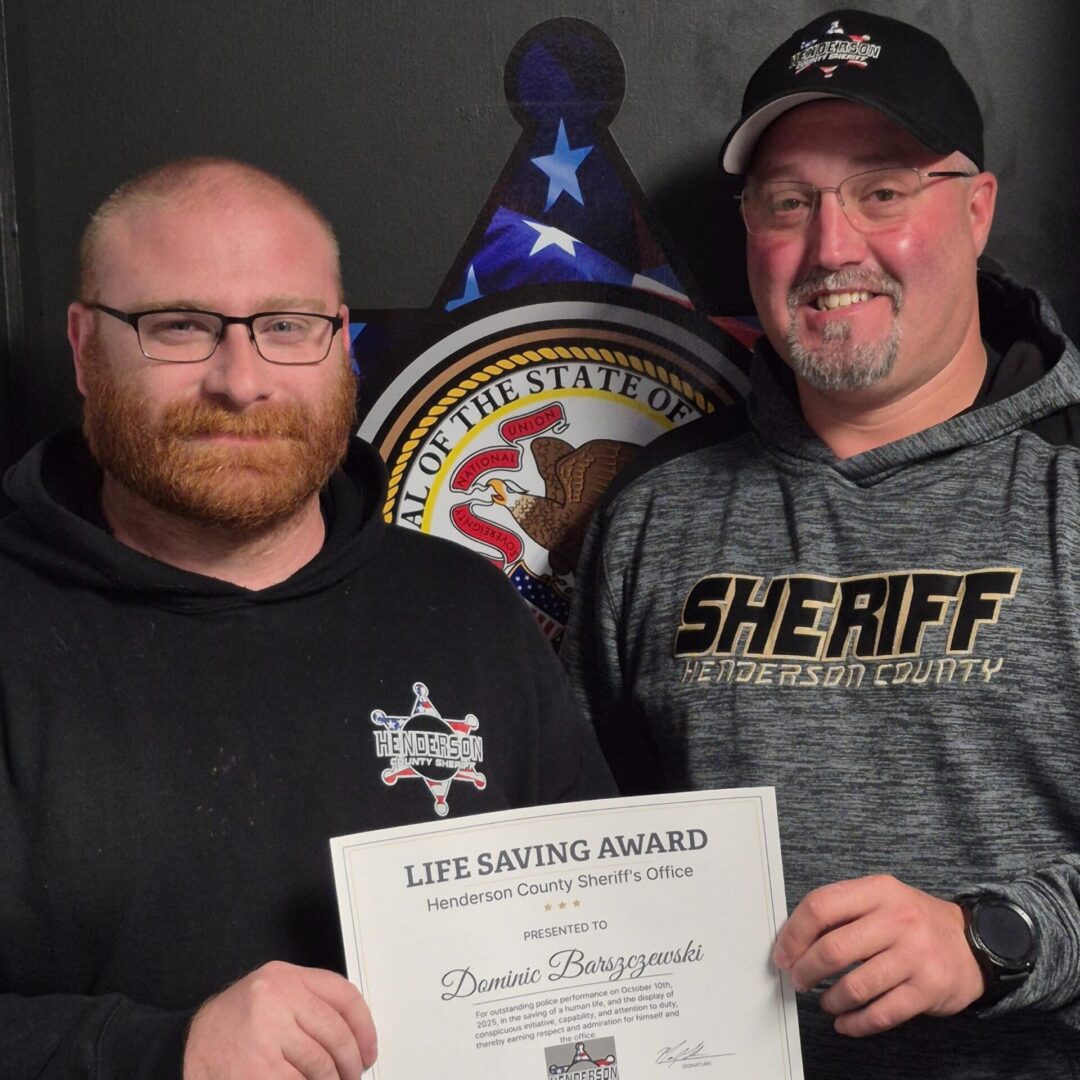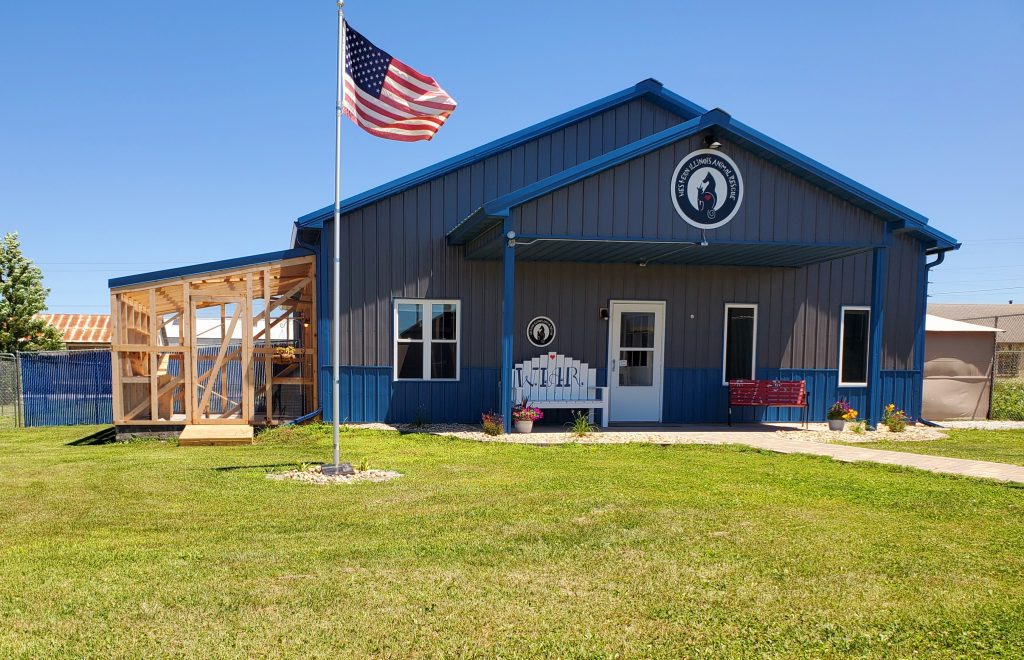Monmouth College business and economics professor Michael Connell gave his first pint of blood when he was a high school student in Flora, Illinois. For the years of his generosity that have followed, Connell recently received a special pin from the American Red Cross for donating a total of 10 gallons, or 80 pints, of his A-positive blood.
Connell said that his propensity to give blood accelerated when he joined Monmouth’s faculty in 1992.
“When I came to town, Doug Hardin, who was president at the time with Community National Bank, asked me to give, and I’ve been giving ever since,” he said.
People can donate a pint of blood every eight weeks. Connell said that he might “miss by a few weeks, but I usually give once every eight weeks.”
Unlike more than 30 years ago, when blood donors were solicited over the telephone or in person, Connell said requests and reminders now usually come in the form of an email or another form of digital communication.
“They have it all technologically coordinated. They keep on you,” he said. “It’s just something I go and do.”
According to ImpactLife – formerly the Mississippi Valley Regional Blood Center – less than 10% of the population gives blood, so donors who give on a regular basis are important to meet the critical need that patients face.
ImpactLife is the exclusive provider of blood products and services to more than 120 hospitals in Illinois, Iowa, Missouri and Wisconsin. The agency collects blood at 22 fixed-site donor centers and at more than 5,000 mobile blood drives held each year.
To learn more about what can be done to help, visit ImpactLife’s website at www.bloodcenter.org.
***Courtesy of Barry McNamara, Monmouth College***















